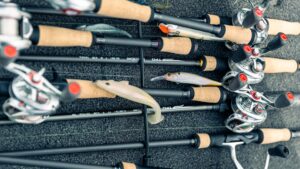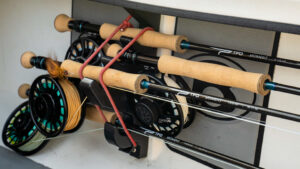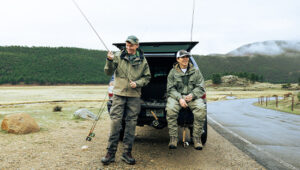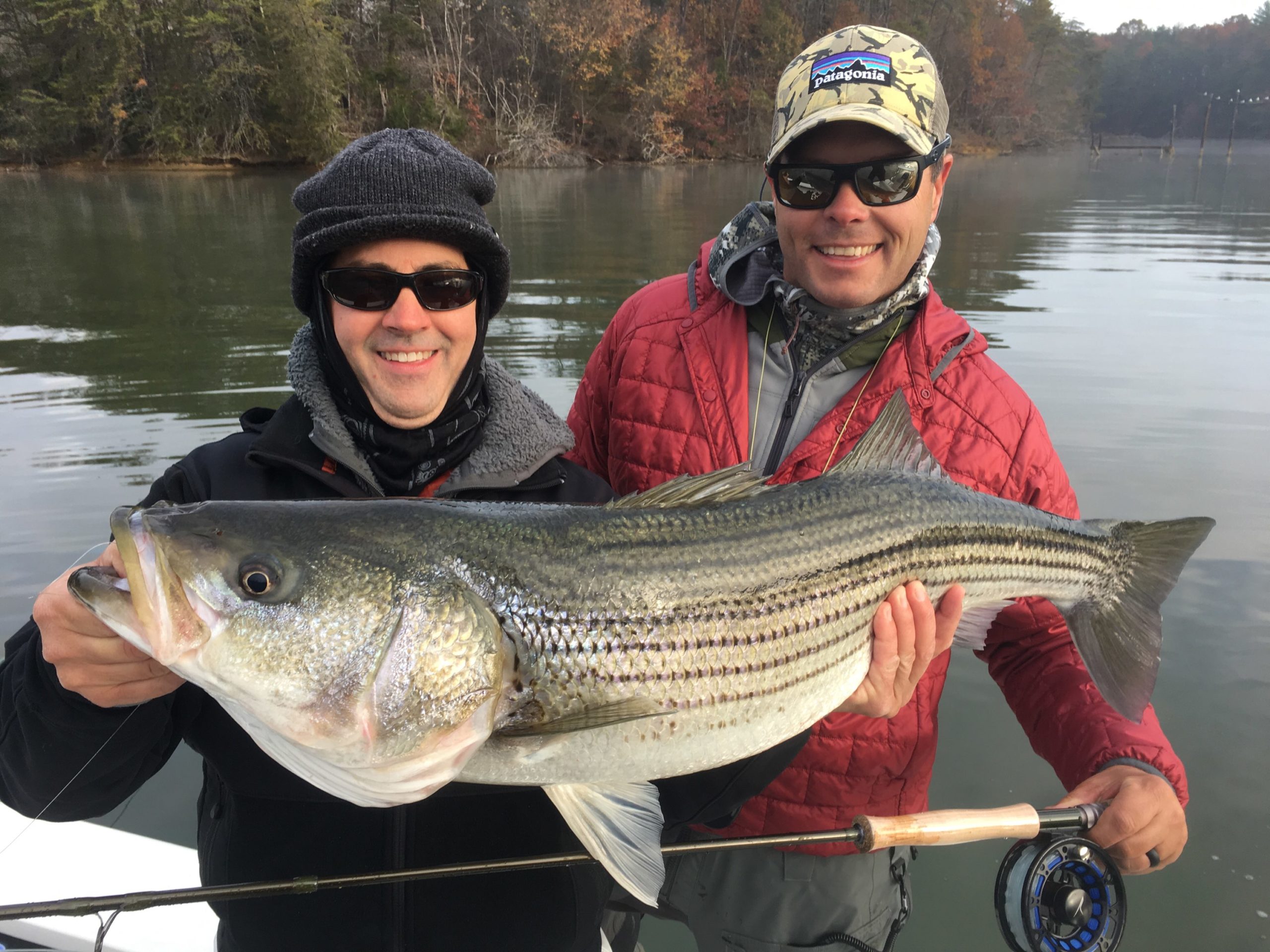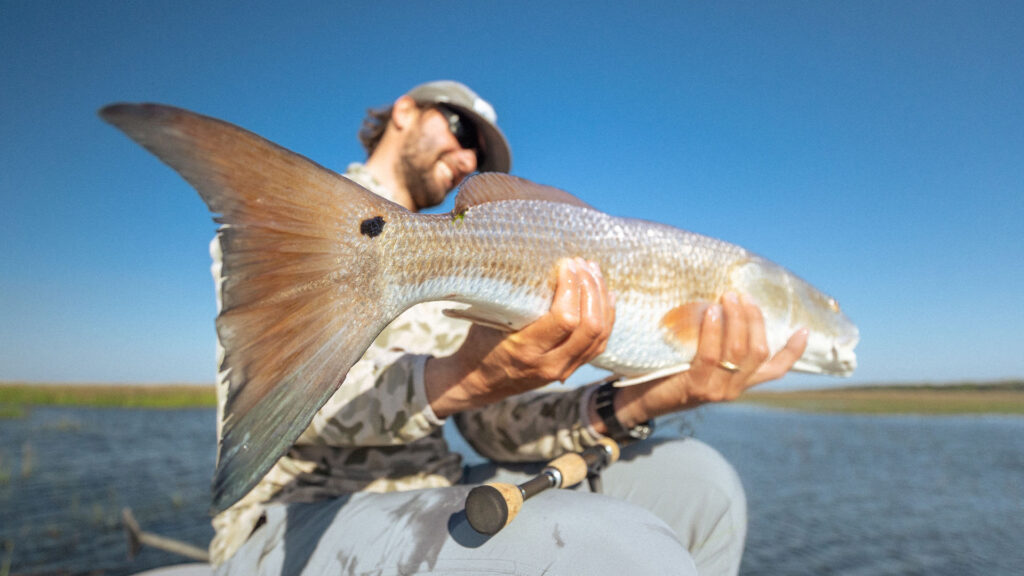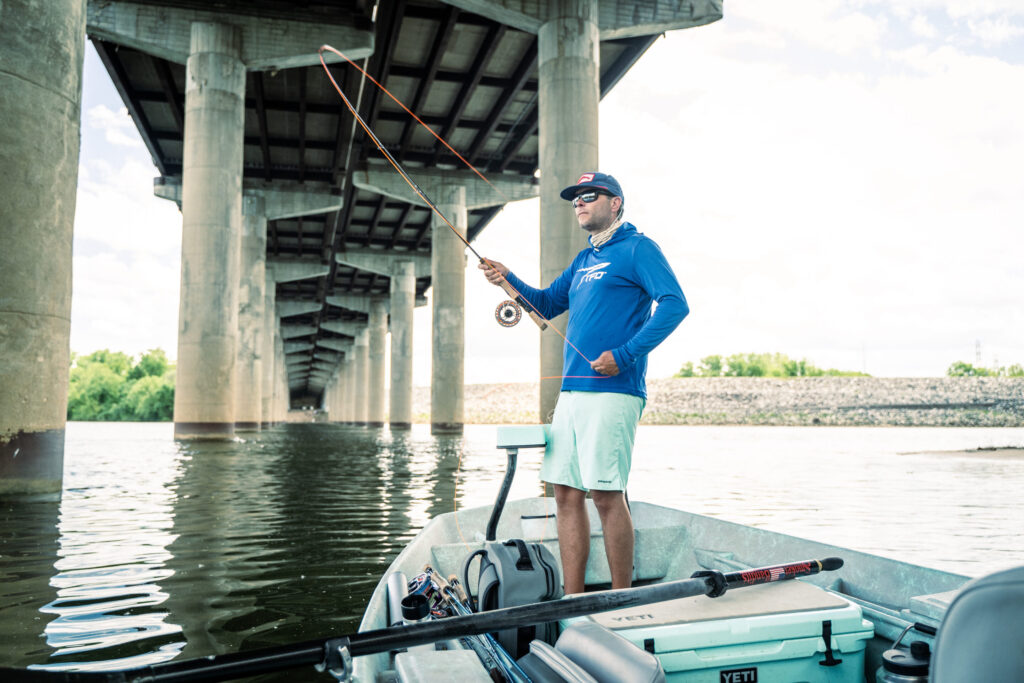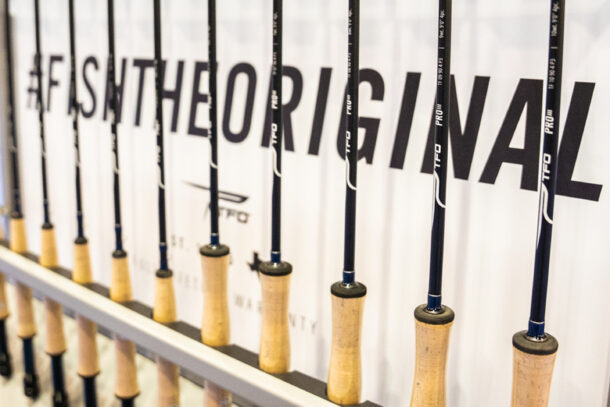Fish need the essentials — food, cover and current. Any angler worth his weight in split shot knows that.
But what if you happen to fly fish a lake and there’s no obvious current? One of the three variables is gone. What to do?
That’s one of the reasons many fly anglers bypass lakes and ponds. Typically, they learn to fish rivers and creeks and simply fail to try stillwater situations.
And if they do, they struggle and return to their comfort zone. Below are a few basics to help shorten that learning curve.
Transportation
We’re not talking about buying a new SUV. To fish lakes, you will need a boat, float tube, canoe or kayak. Wading simply isn’t an option. Shoreline fishing is possible, but you’re limited by the amount of water you can cover. And stillwater fishing demands a bit of prospecting. You can only do so much on foot.
The Equipment for Stillwater
We’ll keep this simple. A 9-foot, 6-weight Axiom II rod is a good all-around choice. It’s big enough for bass, but not too heavy for trout. Rod weight is not set in stone. The species and size of the fish as well as the size of your fly will dictate rod selection.
You will need floating and sinking lines and a long leader. The depth of the fish dictates your choices. Sinking lines work better for deeper fish, but are cumbersome to cast. Floating lines cast better, but limit how deep you can fish.
The reel needs to more than a storage unit for line. Fish in lakes, in general, tend to be bigger than those in rivers and creeks. You will want a reel with a sealed drag. TFO’s Power fits the bill.
How to Find Fish in Stillwater
An entire chapter coudn’t cover this topic, but here are some basics. Find the cover —- shoreline shade, rocks, logs, brushpiles and grass beds — and you’ll usually find the fish. Cover provides protection and yields food. This isn’t groundbreaking info, but the key is to find the cover near an inflow, which is possible a source of current. On many suburban ponds, this could be as subtle as a small culvert. Remember, the less energy fish have to expend, the more comfortable they are. A comfortable fish is a happy fish. Happy fish feed.
Stillwater Techniques
We’ve covered sinking and long leaders. Many times in ponds and lakes, you have to probe different depths. The countdown method is the best way to do this. Cast, let the fly sink and count to 10 and retrieve. Do this again, with a longer count until you reach the desired depth.
Retrieves need to vary. In many situations, slower and shorter is better, but there is no formula. Finding fish is a trial-and-error process. This is where experience matters.
Stillwater fishing can be intimidating. New challenges are never easy. But those perseverant enough to navigate the initial obstacles are often rewarded in spades.
Comments, questions about stillwater fishing on fly, feel free to comment on one of our social media pages.
